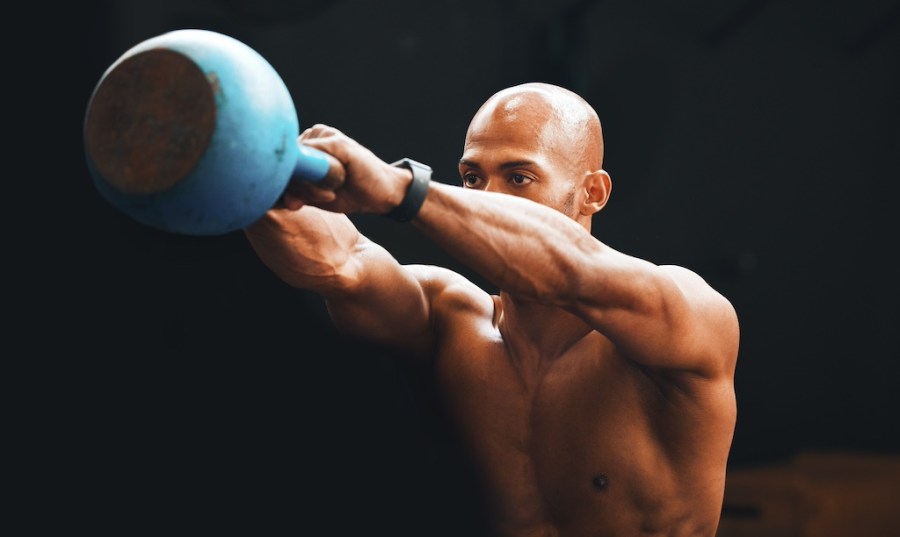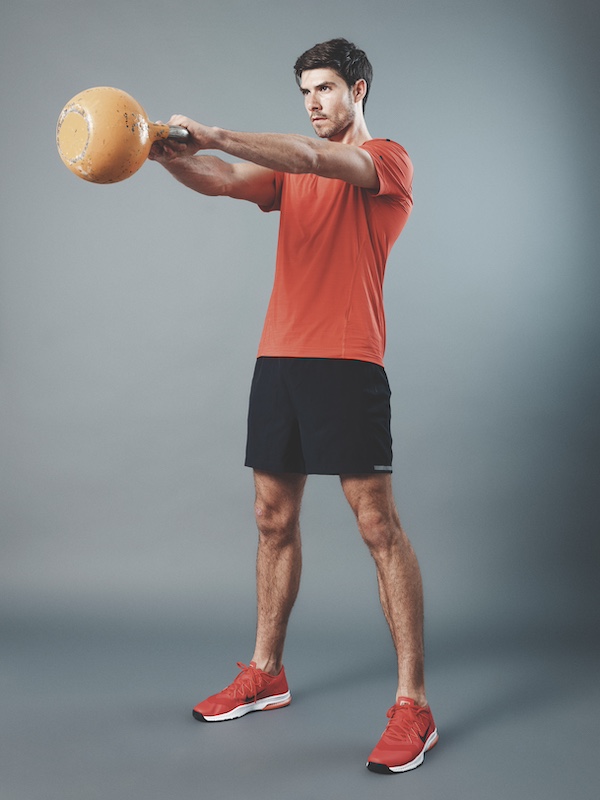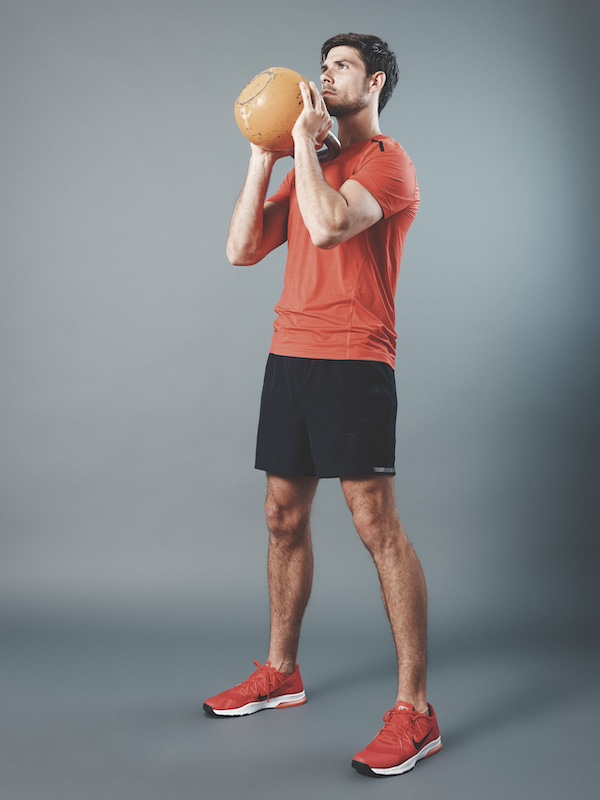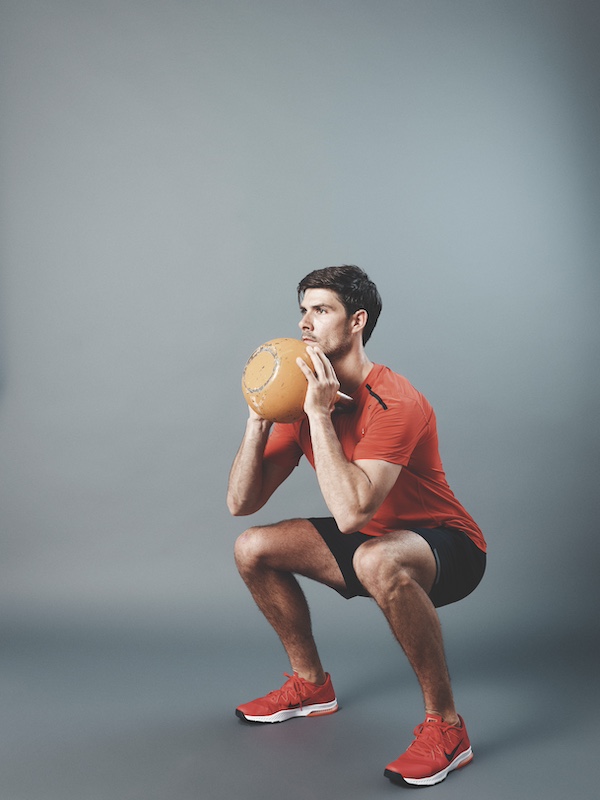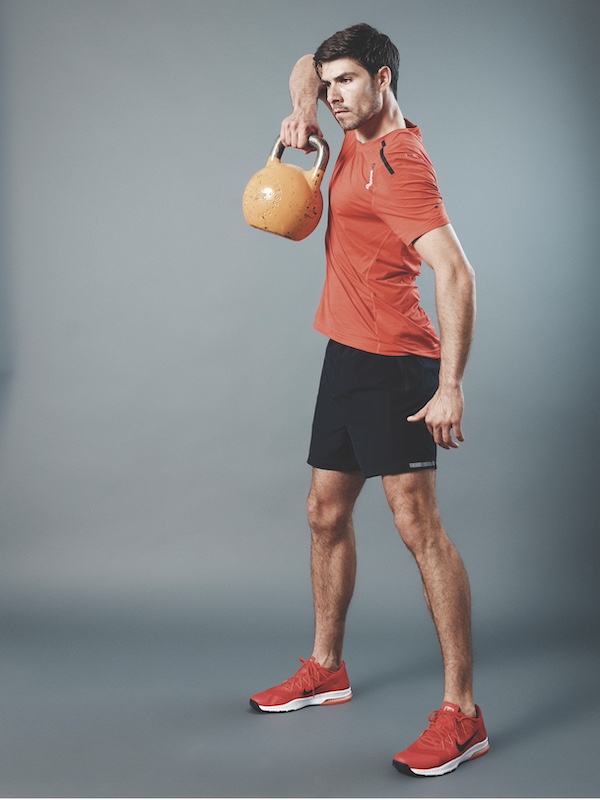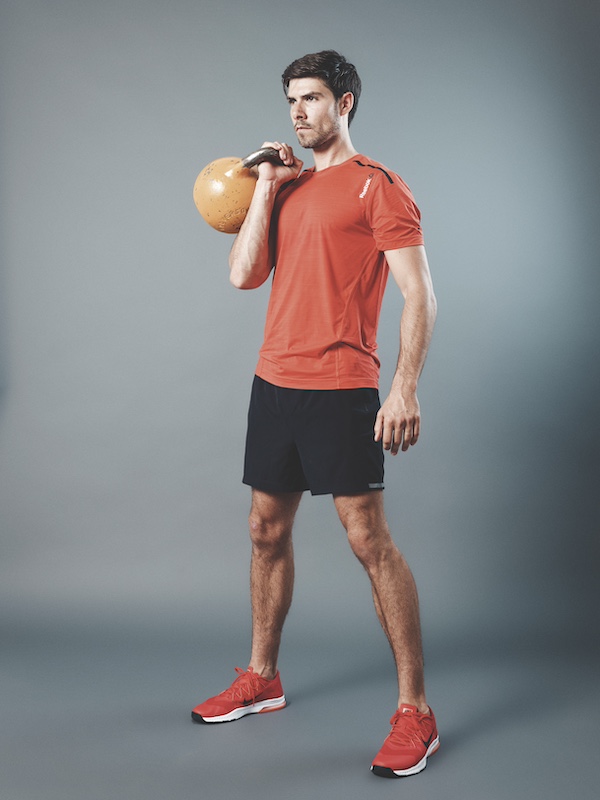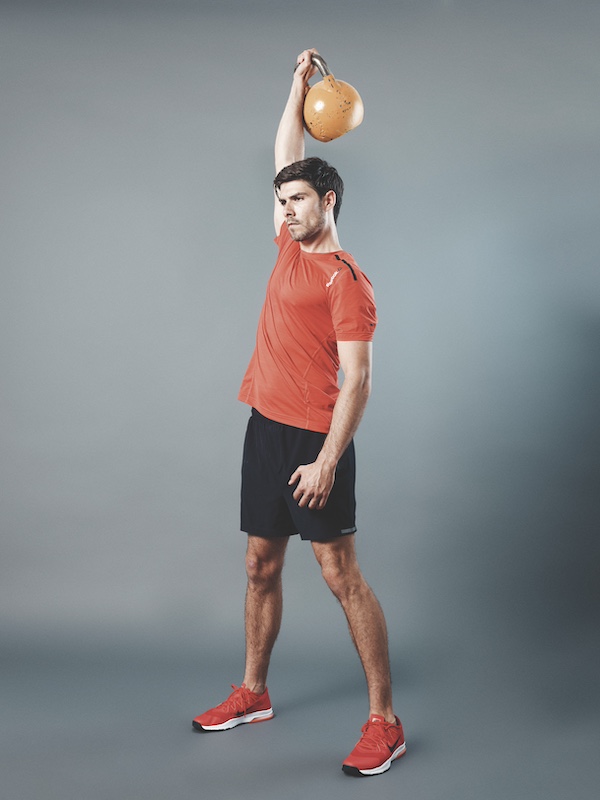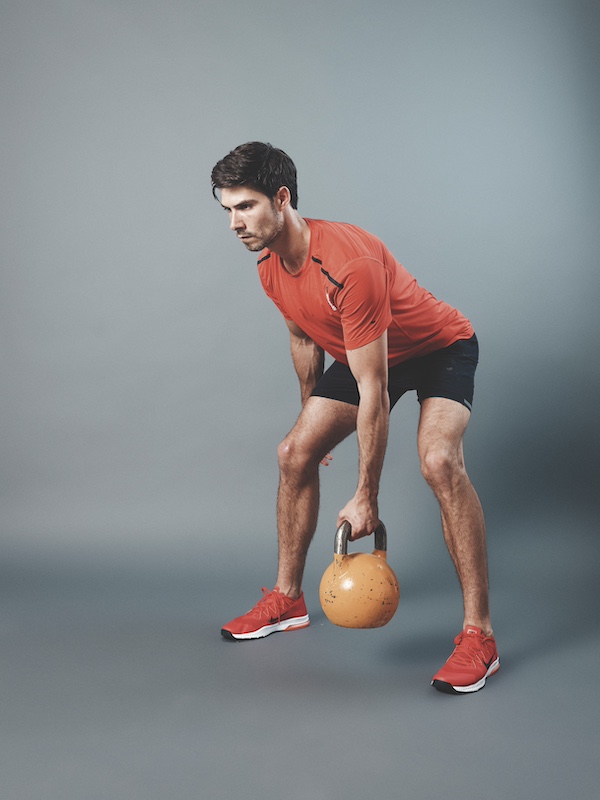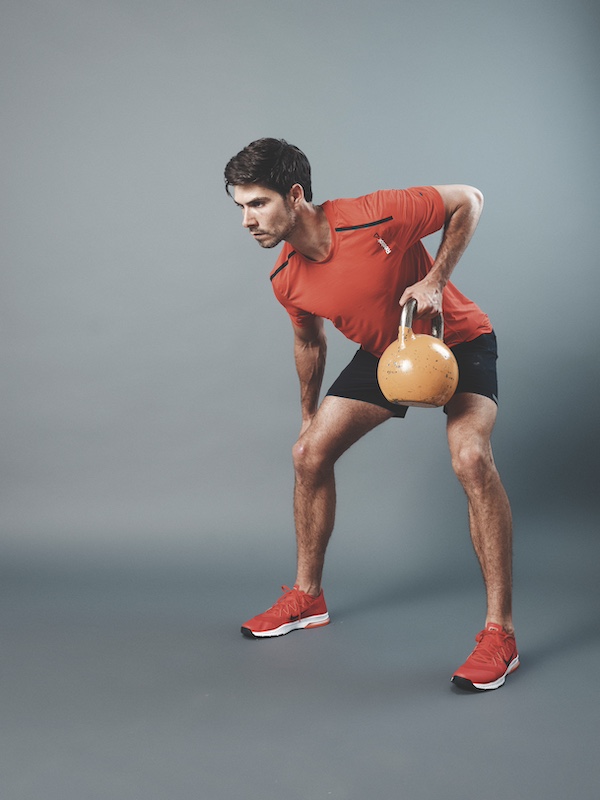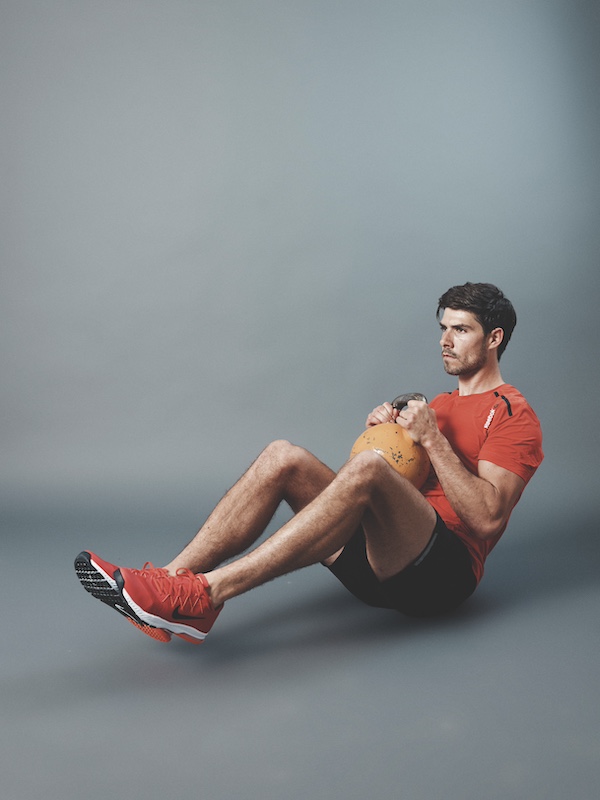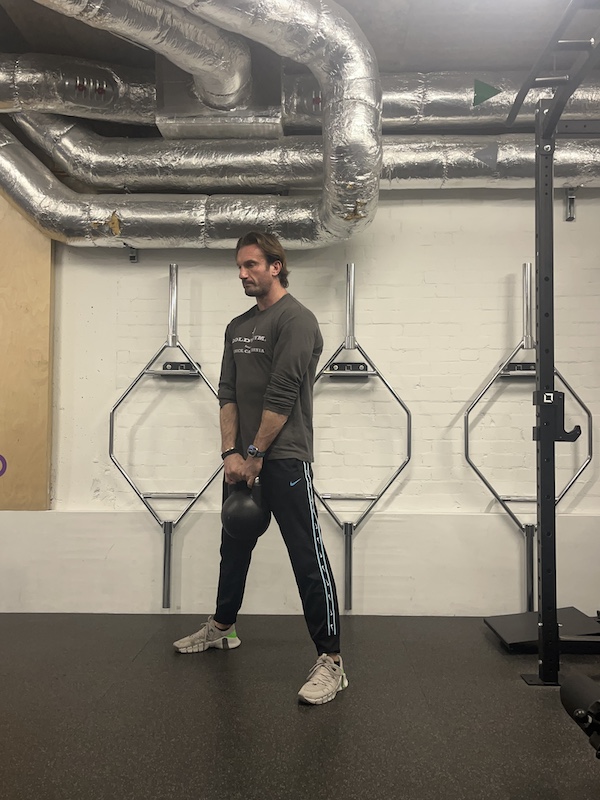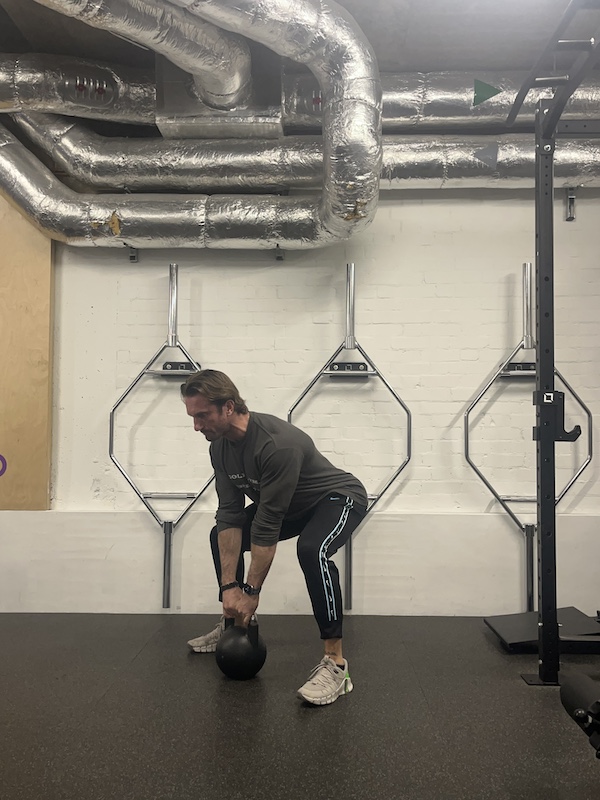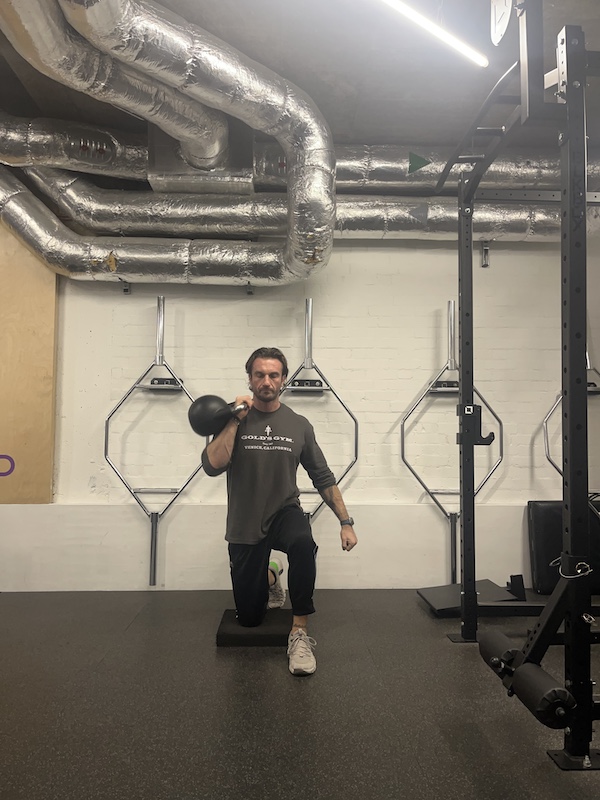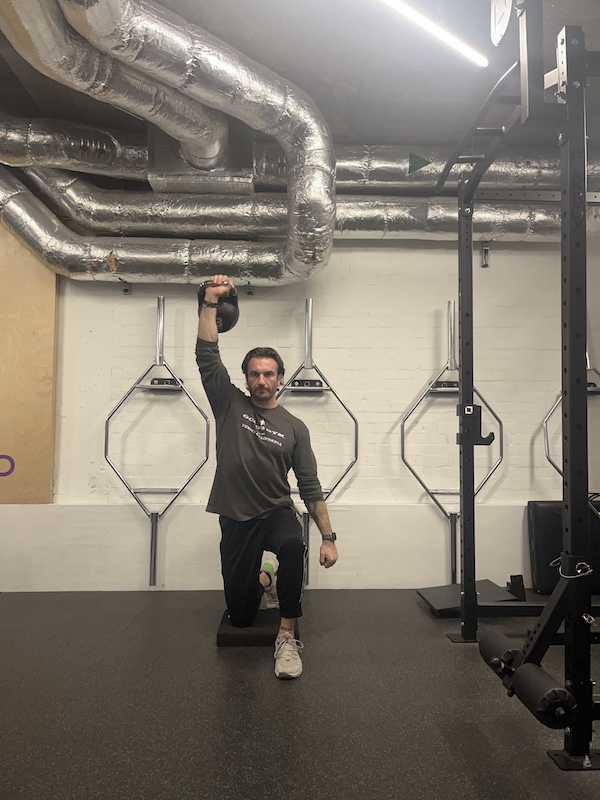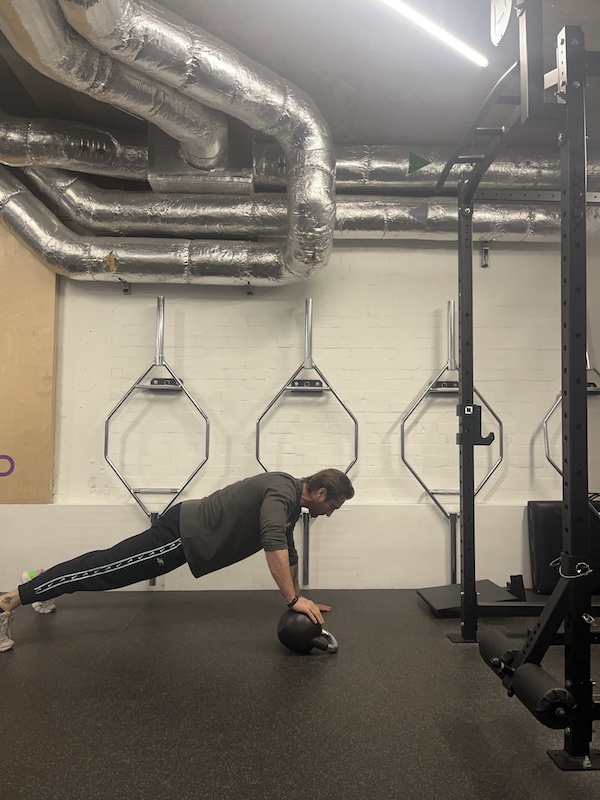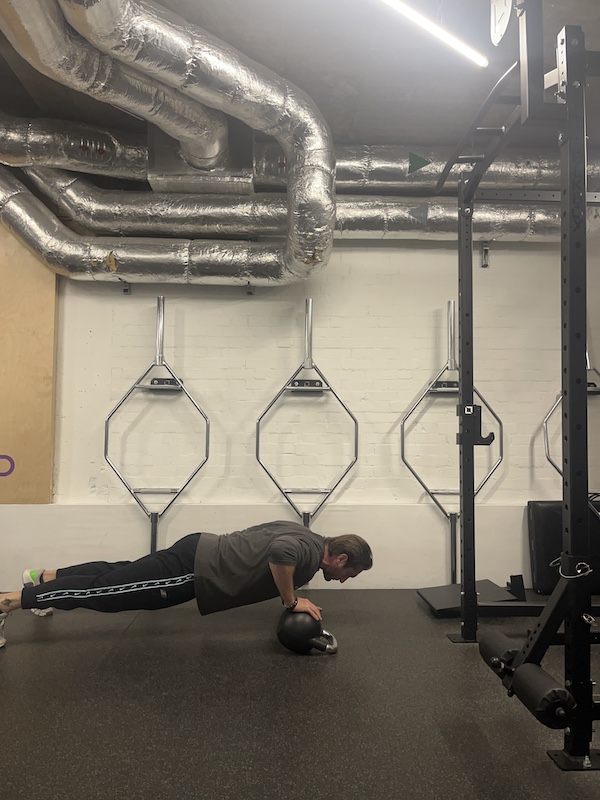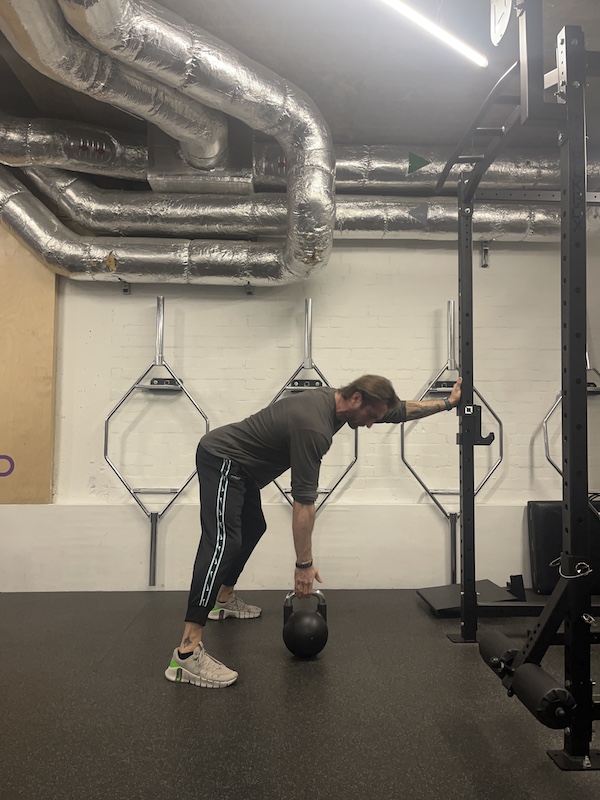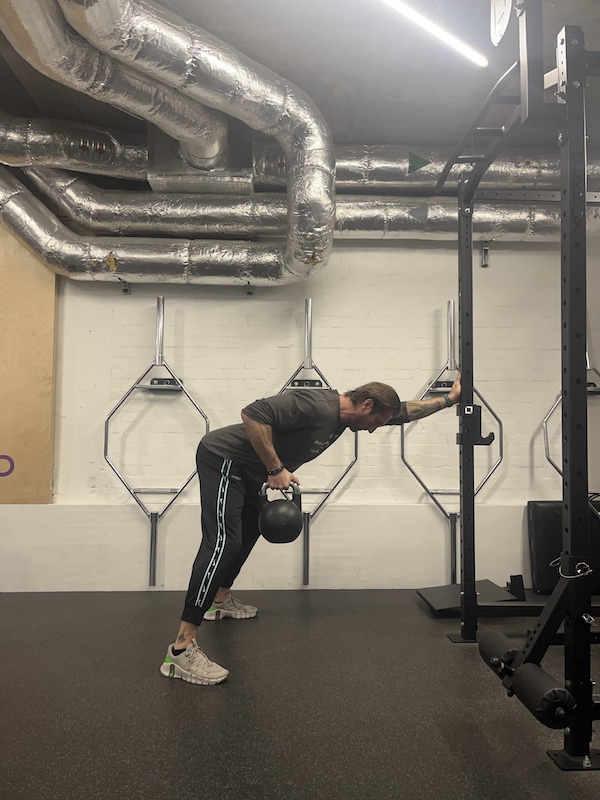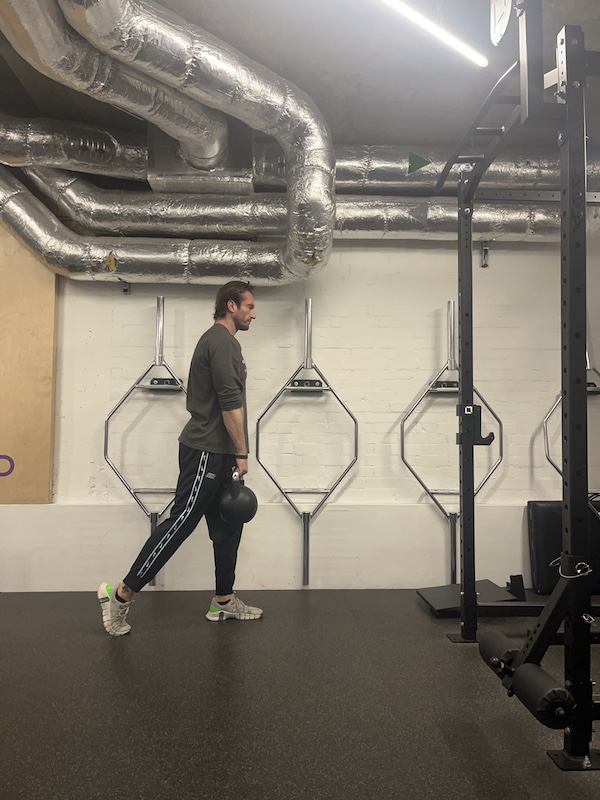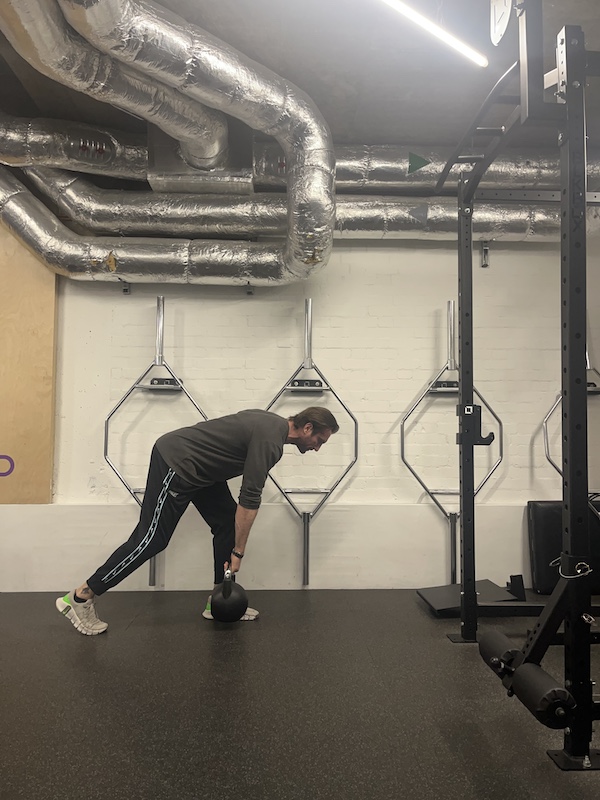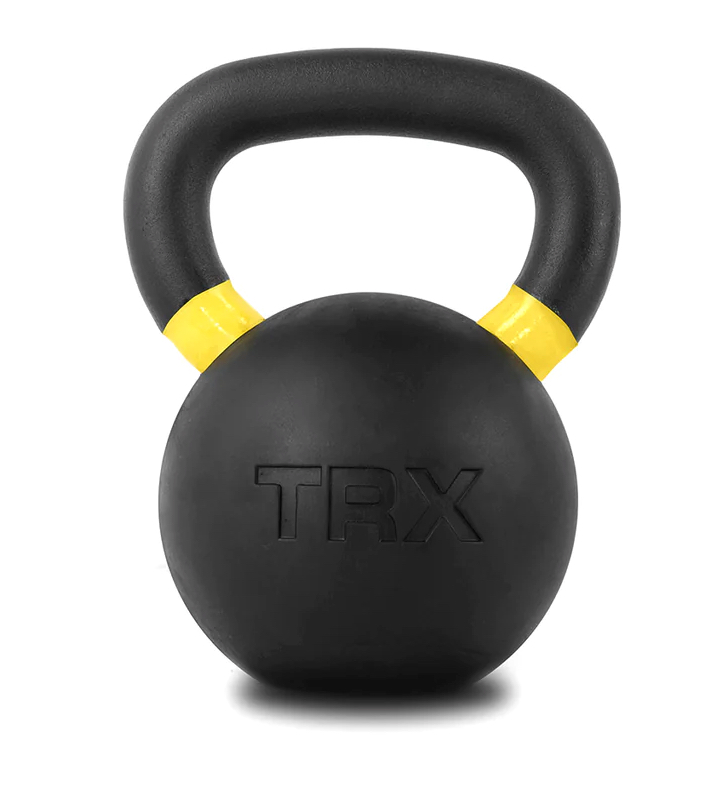If you’re new to kettlebell training, this beginners kettlebell workout teaches you some of the fundamental movement patterns, while torching body fat and building full-body strength.
Get to grips with kettlebell training and you will not only torch body fat and build muscle, but also build explosive power and all-round stability to achieve a stronger, leaner physique that’s less prone to injury. Grab one of your best kettlebells and read on…
This beginners kettlebell workout is a circuit format, so you will complete each move back-to-back with minimal or no rest in-between.
Complete novices can be comforted by the fact the rep ranges are low. But if you begin and find it’s too physically taxing, forget the circuit for now and instead perform 3 sets of 12 reps for each exercise (6 each side for the unilateral moves), resting for 60 secs between sets.
The beginners kettlebell workout to try this January
1a. Kettlebell swing
Reps: 12
Rest: Move straight into 1b
- Swing the kettlebell between your legs with both hands, then pop your hips forward to drive it up to around chest height.
1b. Kettlebell goblet squat
Reps: 10
Rest: Move straight into 1c
- Hold your kettlebell by the base with both hands.
- Keeping your back straight and chest up, lower into a squat.
- Brace your abs and drive through your heels to stand.
1c. Kettlebell single-arm high pull
Reps: 6 each side
Rest: Move straight into 1d
- Stand tall with the kettlebell in one hand.
- Keeping your abs braced, row the weight back and up – think about aiming for your hips rather than your ribs – leading with your elbow.
- Lower under control.
- After 6 reps, switch arms and repeat.
TIP: To work your shoulders and upper back more effectively, always lead with your elbow as you pull the kettlebell upwards. And always lower it under full control.
1d. Kettlebell single-arm press
Reps: 6 each side
Rest: Move straight into 1e
- From the rack position, press the kettlebell overhead, keeping the bell resting against your forearm.
- Lower the weight under control.
TIP: The rack position is when the bell rests against your shoulder, supported with your wrist underneath it. This is a common start and end position for many kettlebell moves.
1e. Kettlebell single-arm row
Reps: 6 each side
Rest: Move straight into 1f
- Hinge from your hips with the bell in one hand.
- Row it up to your hips, leading with your elbow, then lower it under control.
1f. Kettlebell crunch
Reps: 10
Rest: 2 mins, then repeat the circuit 2 more times
- Lie on your back holding the bell with both hands.
- Engage your abs and raise your torso off the floor.
- Pause at the top, then lower.
PT Luke Worthington’s favourite kettlebell variations for beginners
These kettlebell exercises for beginners can performed separately, as part of other workouts, or you can combine all six exercises for an effective full-body kettlebell workout.
If you perform all the exercises in one workout, aim for 3 sets of 8-12 reps per exercise. Rest 60 secs between sets, and 90 secs between moves.
1. Kettlebell deadlift
PT tip: “Maximise tension and stability by squeezing your armpits throughout the movement,” advises Worthington.
- Stand with the feet apart in a ‘sumo’ stance, and the bell on the floor directly below the middle of the hips.
- Reach the arms out in front at 90 degrees to the body.
- Engaging the core and push the hips directly back to form a hinge.
- The knees should flex, but the shins remain in a vertical position.
- As the torso leans forward, maintain the 90 degrees of arm elevation until both hands reach the kettlebell handle.
- Squeezing the hands tight, drive the hips forwards to lift the weight from the floor.
- Finish with the buttocks squeezed, abs engaged, and lifting the crown of the head to the ceiling.
2. Half-kneeling kettlebell press
PT tip: “Exhaling at the top of the movement will help prevent ‘rib flare’ and keep the lower back neutral.”
- Position yourself with one knee on a mat or pad, and the other foot in front – aim for 90 degrees in the front hip and both knees.
- Grasp a kettlebell in the ‘half rack’ position on the same side as the ‘down’ knee.
- Maintain a neutral lumbar spine by attempting to tuck the pelvis beneath you – you should feel a strong contraction in the gluteal of the ‘down’ knee.
- Drive the bell straight overhead, maintaining a flat wrist and with the knuckles facing the ceiling.
3. Kettlebell offset push-up
PT tip: “Considering push-ups as ‘moving planks’ solves most technique issues.”
- Set up in a high-plank position as you would for a regular push-up, but with one hand on the dome of a kettlebell.
- Maintaining a strong core, lower your body towards the floor in a straight line.
- The arm that is elevated on the kettlebell will move through a greater range of motion than the one on the floor, thus performing more mechanical work.
- Push yourself away from the floor using both hands.
4. Kettlebell three-point row
PT tip: “During all rowing exercises, think of the load moving in an arc both up and back to improve contraction of the lats.”
- Set up in a ‘tripod’ stance, with feet slightly wider than hip-width, and one arm outstretched to a rack or bench.
- The shoulders should be slightly higher than the hips, and with a flat back.
- Grasp a kettlebell in the spare hand and pull upwards towards the waist. You should feel the latissimus muscles in the upper back performing the work.
5. Kettlebell ‘B stance’ Romanian deadlift
PT tip: “Clenching the fist of the free hand helps to create tension and stability, therefore improving balance in unilateral exercises.”
- Stand tall with the bell in one hand.
- Step the same leg back as the hand in which the load is held (i.e. if the weight is in your right hand, step right foot back).
- Rest the toes of the back foot on the floor, helping to keep the pelvis oriented forward.
- Hinge forward and down, pushing both hips directly back, ensuring both feet stay in contact with the ground.
- The weight should travel in a vertical line straight down.
- Reverse the action by driving the hips forward and re-orienting the torso on top of the pelvis.
This TRX Kettlebell is the perfect tool for the job
Related content

